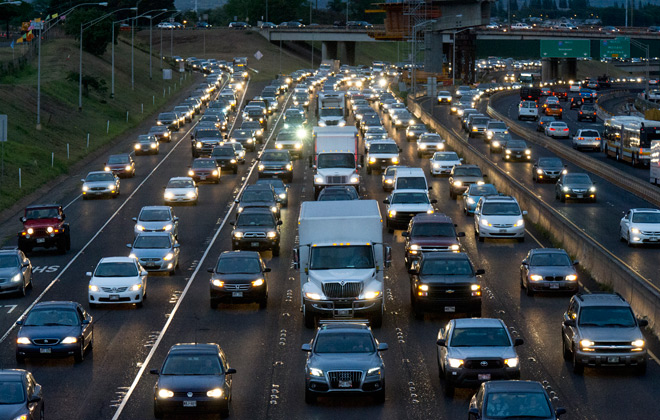Isle commuters sleep, eat in cars to deal with traffic

The H-1 freeway was jammed with traffic Tuesday night after the ZipperLane could not be closed, eliminating two westbound lanes. This was the view from the Kaimakani Street overpass where Moanalua Freeway and H-1 merge in Aiea.
Rep. Matt LoPresti knew he had a problem when his preschool-aged daughter Nina started drawing pictures of herself sitting in traffic.
"Instead of pictures of the playground or the beach, she would draw traffic," LoPresti said. "I started crying. It was so depressing. It really made me rethink how we were living."
On an island that many people think of as paradise, the struggle for residents to get to school or to work in crushing traffic gridlock is a daily part of life.
Island-wide, commuters on Oahu spend an average of 28 minutes getting to work every day, which is higher than the national average of 26 minutes, according to the U.S. Census Bureau. But for some residents, the reality is far worse.
Many who live on the island’s West side leave their homes at 3 or 4 a.m. to beat traffic as they drive into town, and then sleep in their cars in mall parking lots or on residential streets before going to work. They eat their meals together as a family in the car, or their in-laws and neighbors pick their children up from school.
On Oahu, 22 percent of commuters left for work before 6 a.m., according to a census survey. The average commute time for public transit riders was 50 minutes, and less than 10 percent of commuters hopped on buses to get to work, while an increasing percentage of Oahu commuters chose to drive alone, the Census Bureau reported. The problem could get worse, with housing developments in the works and with Oahu’s population expected to grow about 4 percent by 2020.
Don't miss out on what's happening!
Stay in touch with breaking news, as it happens, conveniently in your email inbox. It's FREE!
And when things go wrong on the freeway, the ripple effects are felt from child care centers to the halls of the state Capitol.
Sen. Maile Shimabukuro recalled an embarrassing event. She set out early for a committee meeting, but a traffic incident turned her 28-mile commute on the express bus from Nanakuli into a nearly five-hour saga. The bus driver gave up, making riders get out with more than 2 miles left on the route.
"I had to walk from the park, and I was already two hours late. It was the most horrendous thing ever," Shimabukuro said.
The geographic limitations of a volcanic island of mountains surrounded by water contribute to the problem.
"We’re an island community, which means the development tends to be along the coastal plains, where you have infrastructure in place — water and sewers and streets," said Michael Formby, director of the Department of Transportation Services. "As a result, it tends to make your communities very linear, compared to mainland communities."
A $6 billion Honolulu rail project that officials estimate will take 40,000 cars off the road is expected to be completed in 2019, but without additional money, the project will fall short by $910 million, Formby said. The Hawaii Legislature approved a plan to extend taxes to fund the shortfall, and the bill awaits Gov. David Ige’s signature.
The island’s layout limits the option to widen freeways in many areas, but the state is adding lanes to highways by narrowing existing lanes, Formby said. That work started east of Honolulu and now is pushing west, he said.
Councilwoman Kymberly Marcos Pine, who represents the west side, said in a phone interview from her car that she’s working to raise awareness about job openings in the area.
In the meantime, drivers are finding creative ways to get around.
"If you need to be in town at a certain time, for instance, 7, you’d have to leave before 5," said Glory Gervacio Saure, director of the Honolulu office of the Equal Employment Opportunity Commission. "If you leave one minute late, you’re stuck in traffic, because everyone leaves at the same time."
Commuting has been a part of Gervacio Saure’s life since her family moved to the west side, drawn by cheaper homes. As a child, she woke up at 4:30 a.m. and slept in the car on the drive to school in town.
"We’d get to school at 6, it would still be dark, and I had a few classmates who also lived on the west side, so we’d just wait around at the main area of the school, eat our breakfast, do our homework and watch the sunrise," Gervacio Saure said.
Despite the commute, she wanted to be close to family and a more peaceful lifestyle on the weekends.
LoPresti, who lives in Ewa Beach, sometimes drives east from the capitol on his way home — crossing a mountain range and driving through Kailua in a 20-mile detour — to avoid traffic and save 10 minutes on his commute.
"Our whole life schedule is around traffic," LoPresti said.




